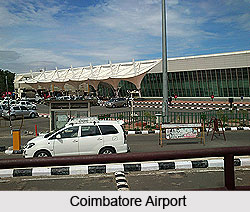 Multitudes of towns and cities have thronged the states of India. The state of Tamil Nadu too is not an exception. Komaralingam is a panchayat town, lying in the district of Coimbatore of Tamil Nadu state of India. Komaralingam encompasses a total area of 32 sq km. Several industries also have flourished here. Amaravathi River runs near by.
Multitudes of towns and cities have thronged the states of India. The state of Tamil Nadu too is not an exception. Komaralingam is a panchayat town, lying in the district of Coimbatore of Tamil Nadu state of India. Komaralingam encompasses a total area of 32 sq km. Several industries also have flourished here. Amaravathi River runs near by.
A study of a town or place becomes incomplete unless and until he gathers first hand knowledge about its demographical scenario. In order to fulfill the objective, eminent demographers of India have devoted their heart and soul so that they can bring forth information about Komaralingam town`s demography. Thus they have successfully conducted surveys and research works in Komaralingam, which can help any one to develop familiarity with its demography. The most prominent is the Census report that has been brought out in a particular year. Being published in the year 2001this report depicts certain demographical data viz. population status, literacy condition etc. As per this report, Komaralingam town`s population has been measured to be 11,737. It is remarkable to note that in Komaralingam both males and females are in equal proportion. In other words, male populace constitutes 50 %, while the population of females also is the same.
The experts also have cited information about Komaralingam town`s literacy condition. This Census report too highlights facts that are related to the literacy of Komaralingam. It has been found out that its average literacy rate has been deduced to be 55 %, which is even lower than that of India. In other words 59.5 % is India`s average literacy. Needless to mention, like several other places in India, in Komaralingam too males are more inclined to education. This is evident from its literacy rate constituting 63 %. However rate of female literacy is 47 % only. In Komaralingam, children who are below six years of age constitute 11 % of the total population.
To enhance the admiration of tourists, several locales have developed in the adjoining areas of Komaralingam. Samarayapathi, Udumalpet, Kolumam, Kurichikoptai, Madathukulam, Karamadai, Palladam and Anamalai deserve to be mentioning.
For facilitating connectivity with other places, Komaralingam is linked by roads, rails as well as airports. Instances can also be cited. Place like Coimbatore has been connected via road. C A Coimbatore Airport and Coimbatore Junction Railway Station also lie in close vicinity of Komaralingam.



















